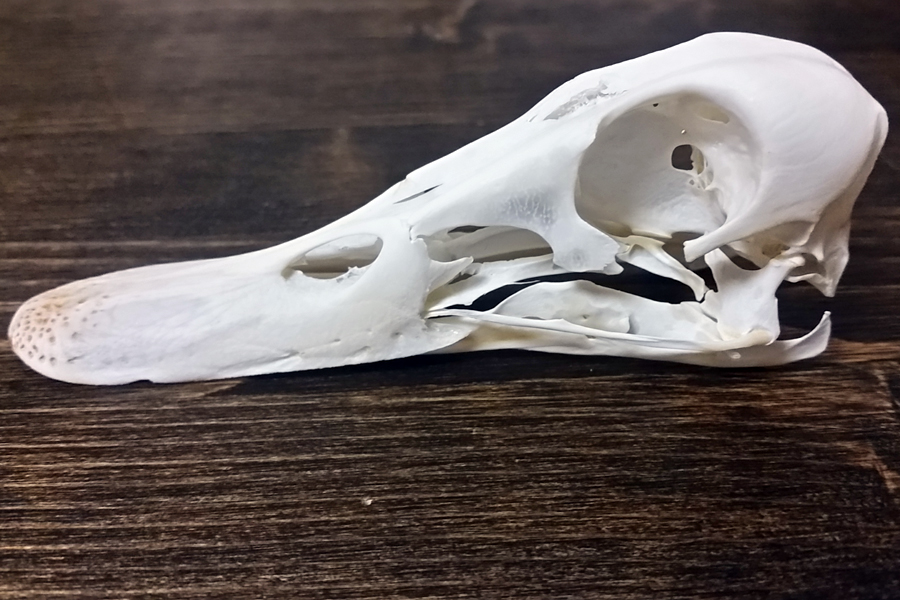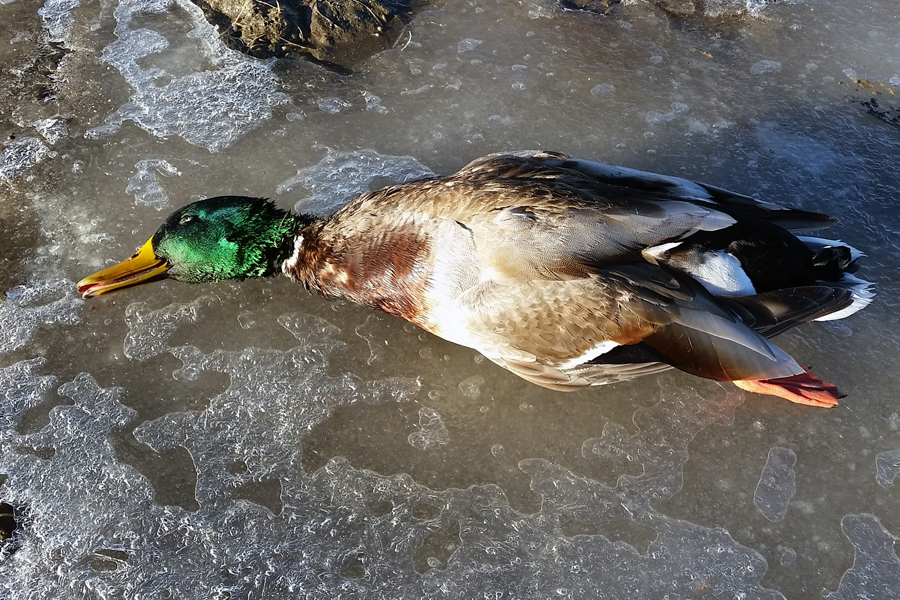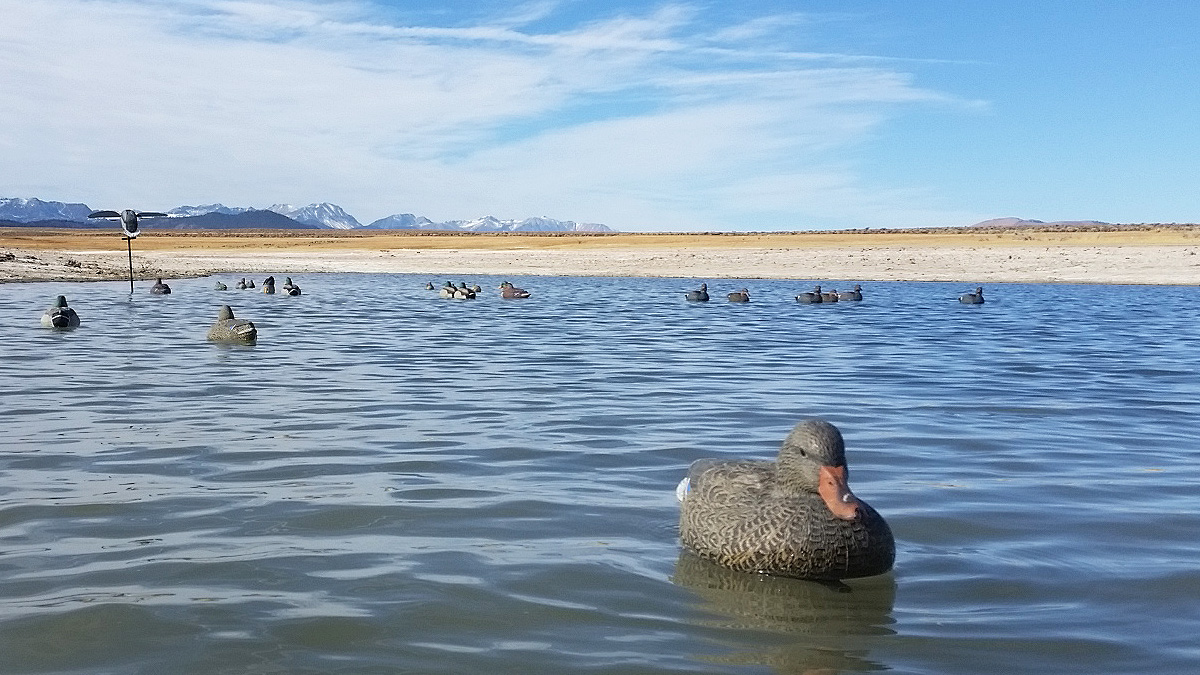European Duck Mount

You are probably here, because you want to know how to European mount a duck head. Fortunately, European mounts are an easy and attractive way to preserve just about any animal species. Here’s how I made a European mount out of a Mallard drake skull.
Because of the fragile and small nature of a bird skull, they are actually more work to clean than a larger skull, but the cleaning, boiling, and bleaching method is the exact same.
Step 1: Cleaning
Remove as much muscle and tissue.
Step 2: Boiling and Cleaning
Add dish soap, borax, and a splash of laundry detergent to a pot of water, and gently boil the skull in the mixture. After boiling for a while, use your judgement, remove any additional loosened tissue, like brain, or connective tissue, replace water with clean water and more dish soap, borax, and laundry detergent, and continue to boil. Repeat step 2 as many times as it take to remove all tissue.
Step 3: Bleaching
Do a last boil with soap, but also add hydrogen peroxide. If the skull is properly cleaned at this point, you don’t need very much hydrogen peroxide to get a nice white skull. Bleaching also helps kill any bacteria that would cause any hidden or unseen tissue from rotting later. Although this step can be done with bleach, as the name of the step implies, bleach will make bones chalky, and weak.
An alternative method to boiling in a bleaching agent is to use Salon Care 40 Volume Creme Developer. After cleaning and boiling out grease and oils, the developer creme can be brushed all over the clean dry skull, and place in a sandwich bag. A small bird skull may not need more than a few minutes, so after about 5 minutes rinse the skull in hot water, and let dry. If its not white enough, repeat the process.
Step 4: Let Dry
The simplest step, let dry. I let dry in direct sunlight, as this seems to help whiten the skull to a more bright white. Make sure no critters steal your mount at this stage.
Step 5: Sealing(Optional)
I don’t ever seal my euro mounts; I’ve never found a need. However, some people will clear coat, lacquer, or even paint their skulls. To each their own.
Tags: duck, euro mount, european, European mount, mallard, mount, skull Comments
